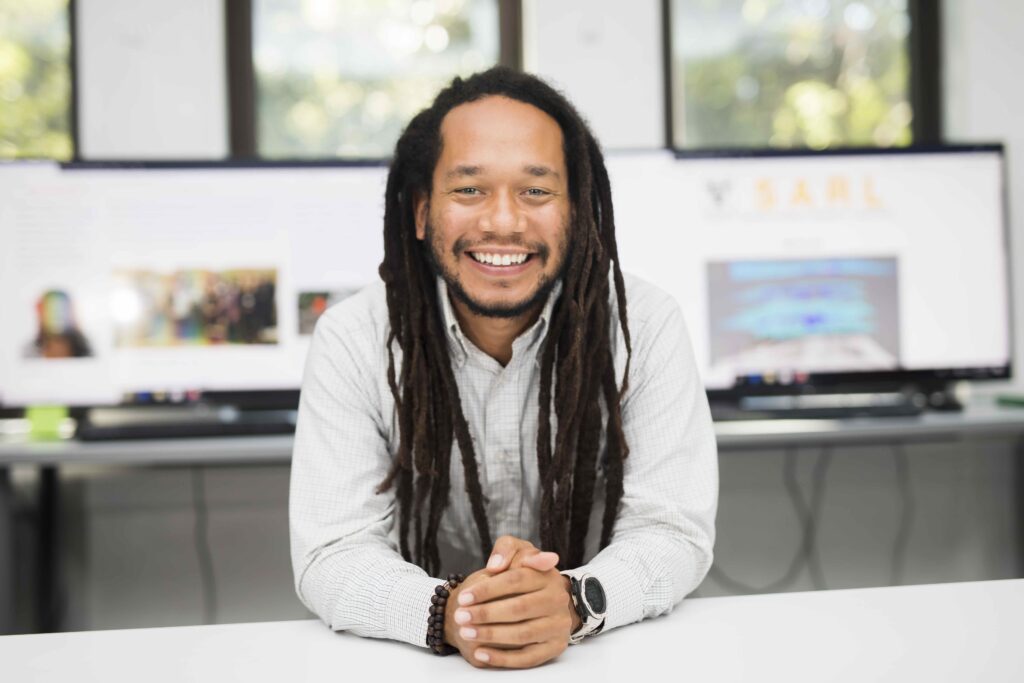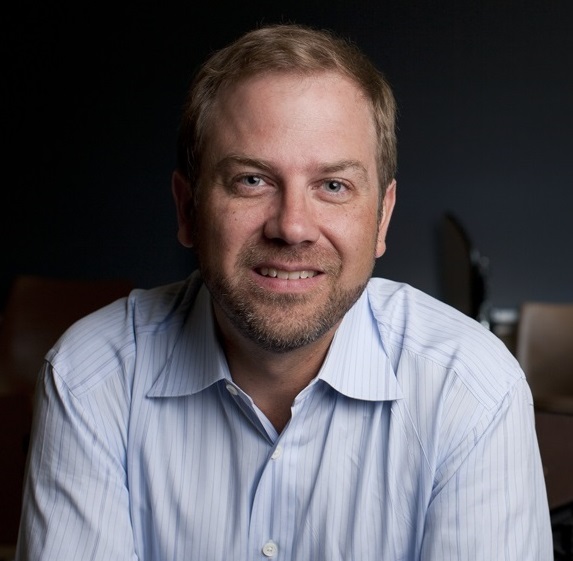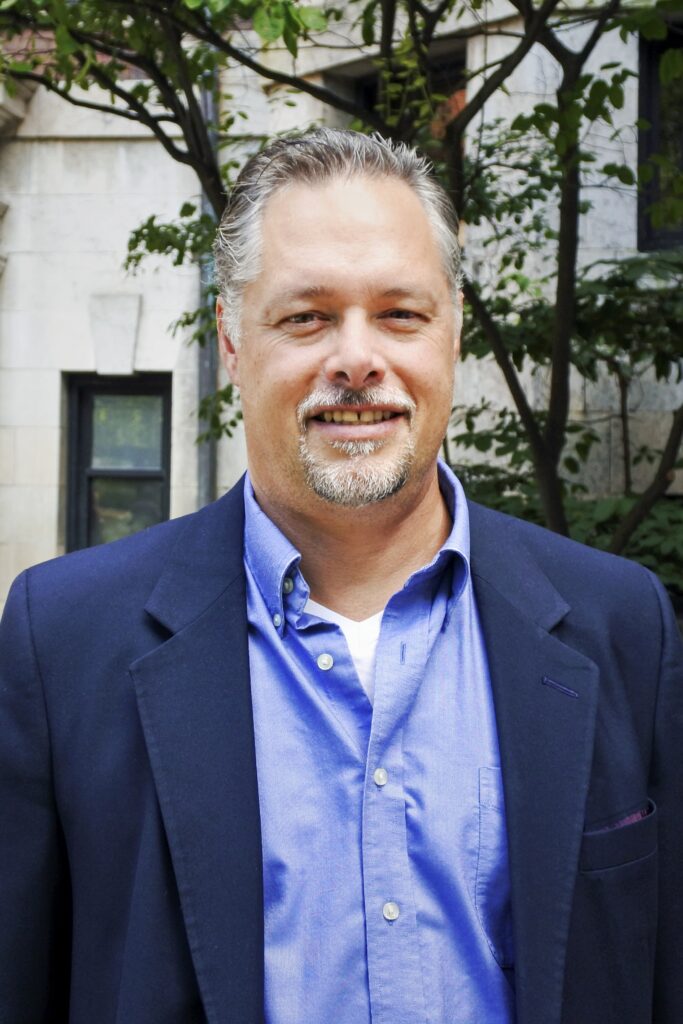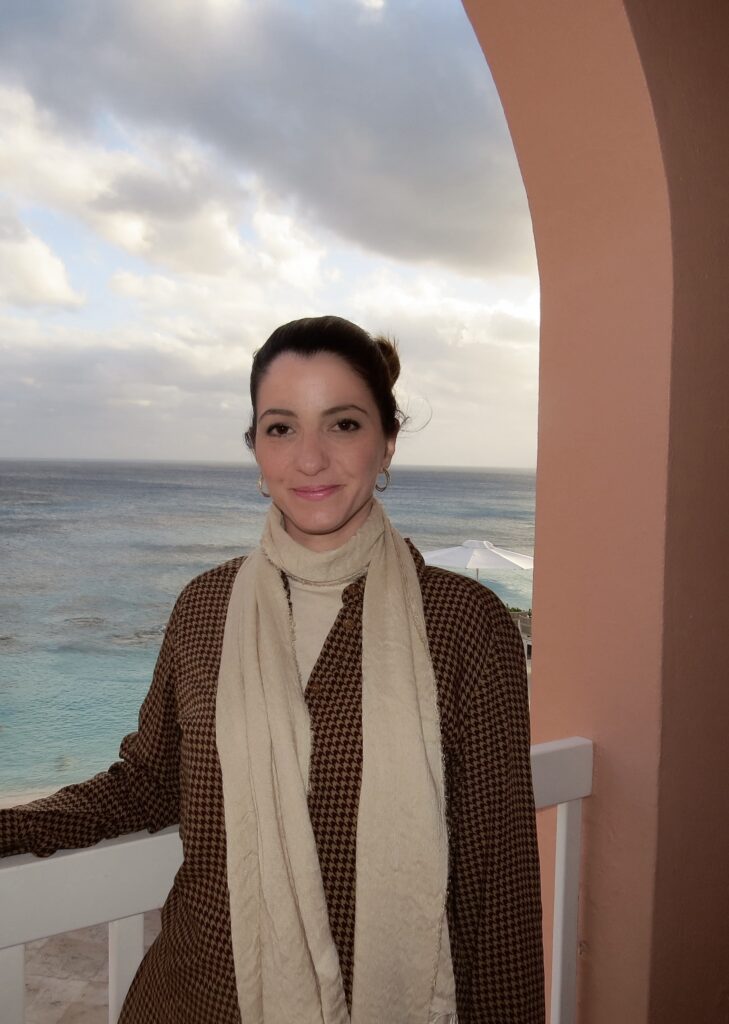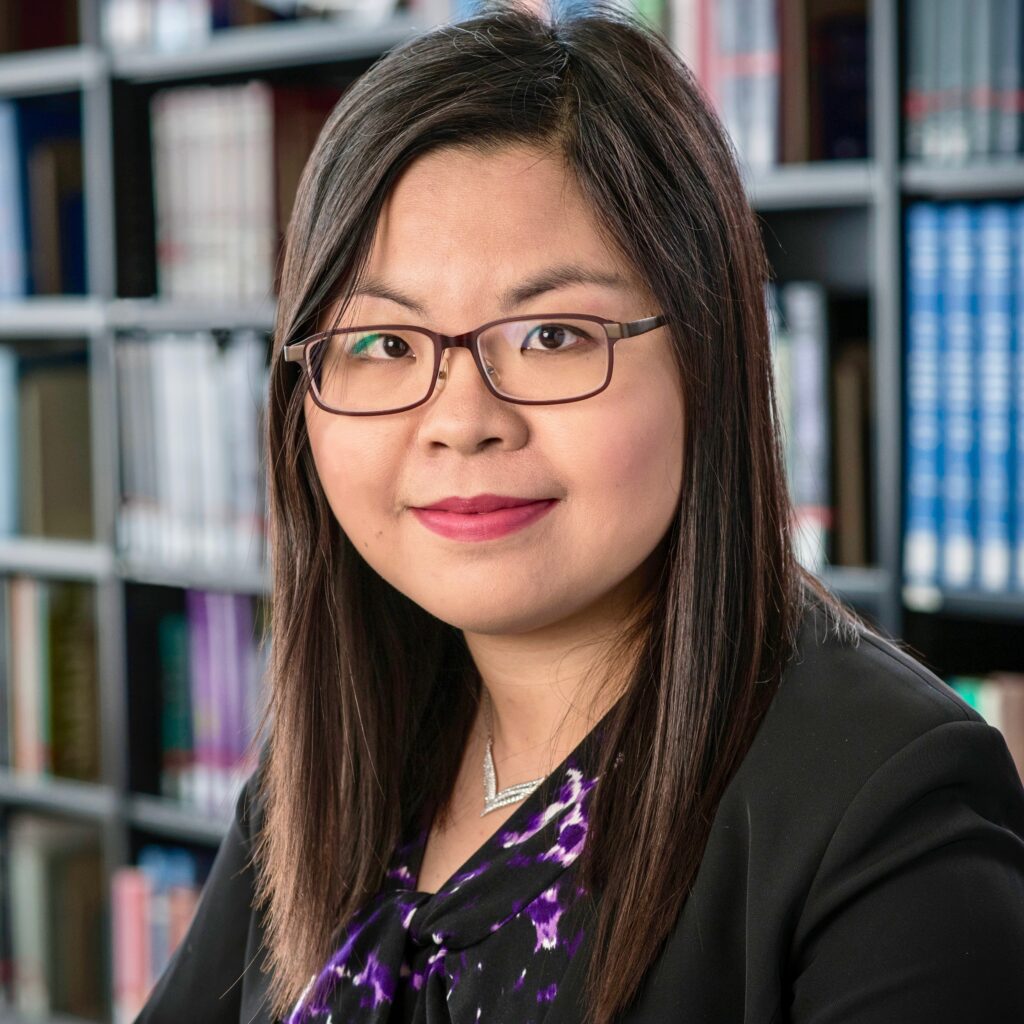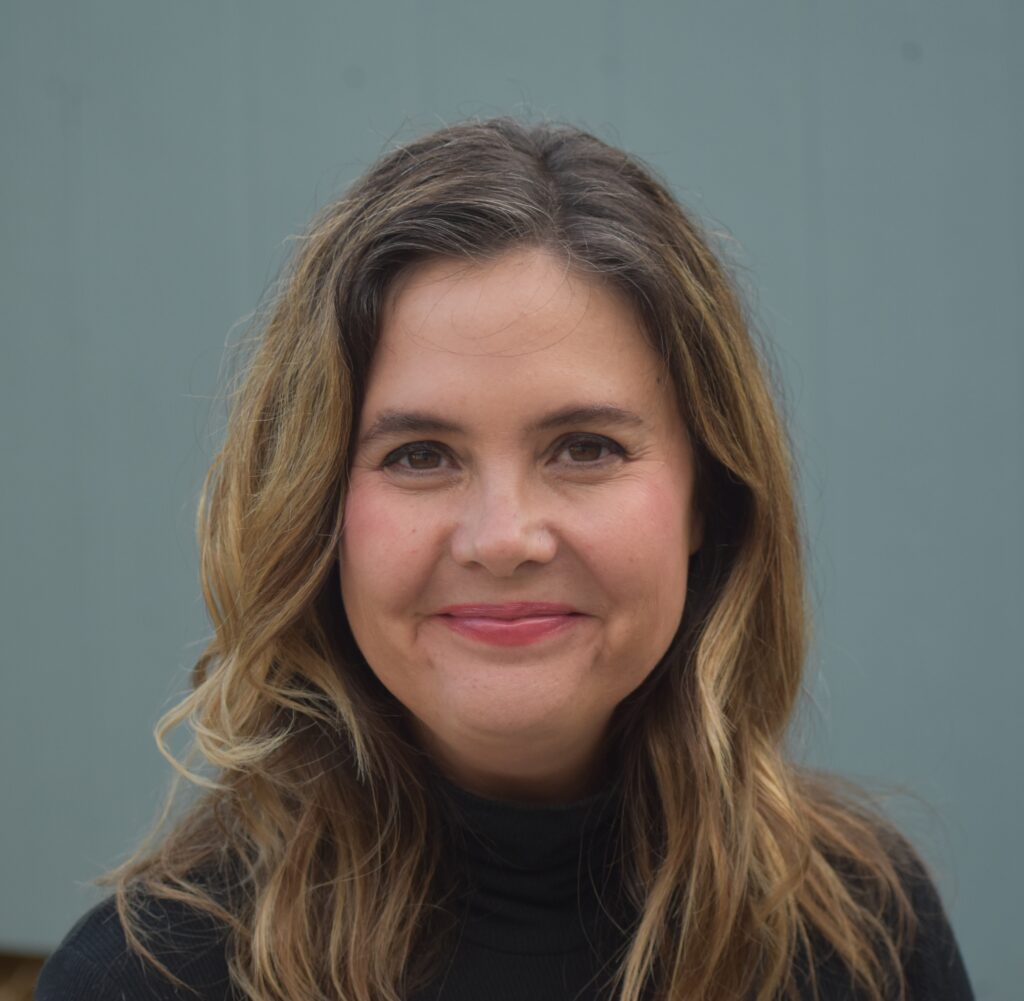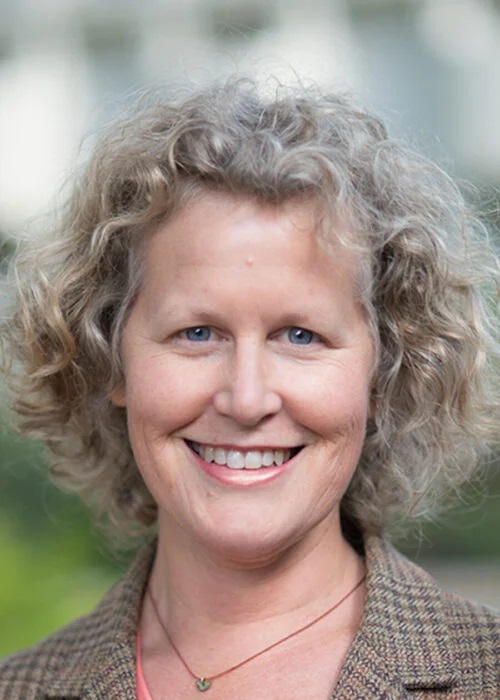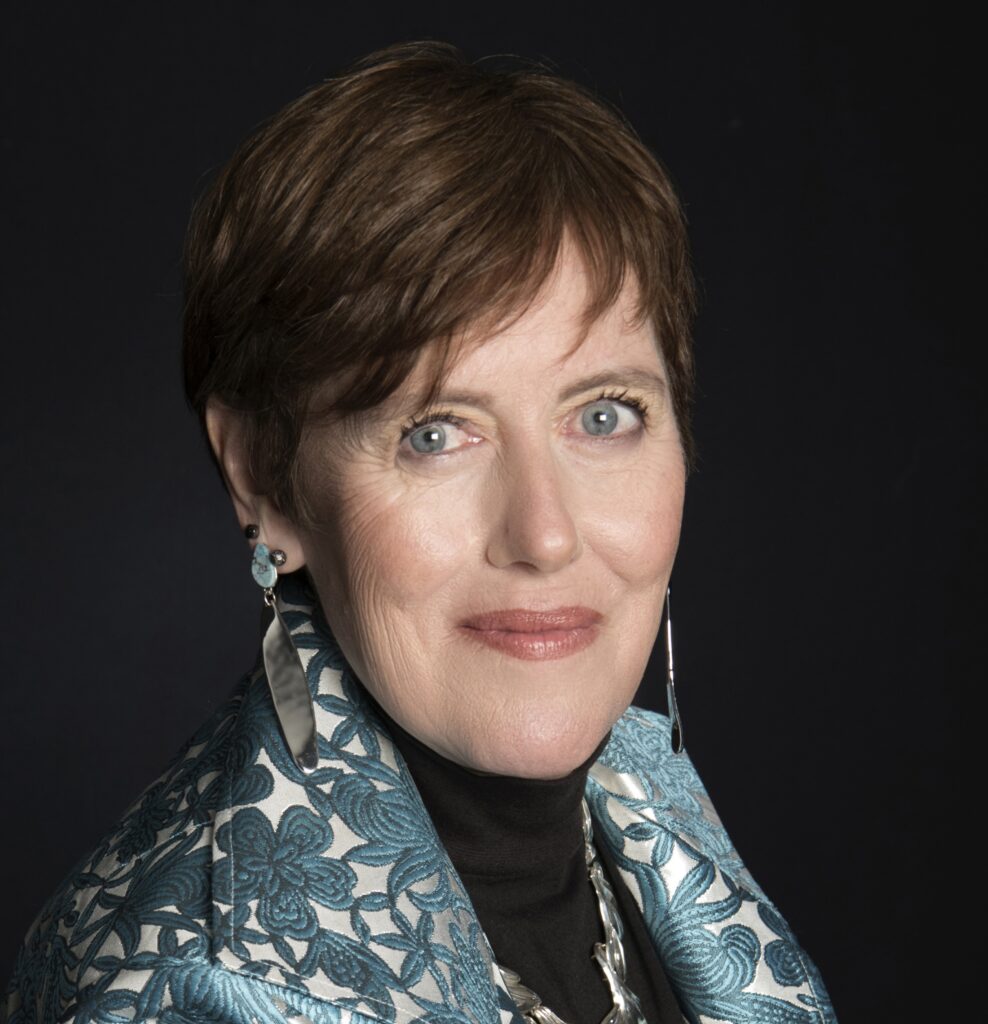Introduction
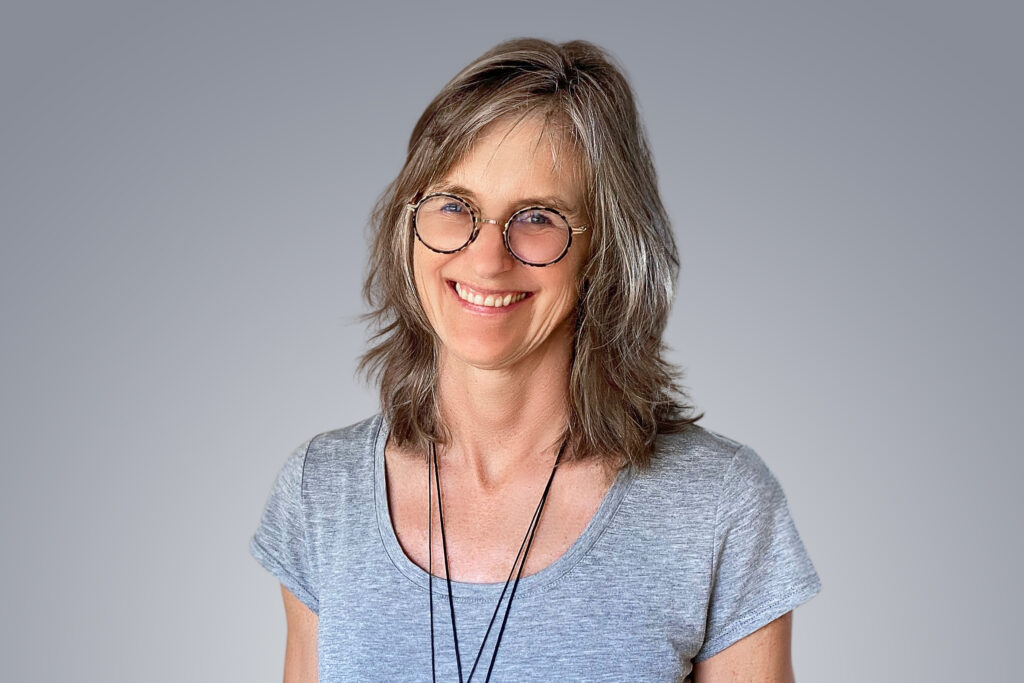
The events of 2020 were a wake-up call for anthropology – one that was long overdue. This Forum has its roots in an initiative launched by the Society of Black Archaeologists in the wake of George Floyd’s murder. The collaboration grew to include the Indigenous Archaeology Collective, SAPIENS, the Wenner-Gren Foundation, and the Cornell Institute of Archaeology and Material Studies.
A multitude of good things came out of our meetings: a webinar series and a season of the SAPIENS podcast on Black and Indigenous Futures in Archaeology; the Archaeology Centers Coalition, founded to address systemic racism in archaeology; and a series of meetings hosted for funders dedicated to doing better when it comes to advancing the careers of marginalized and minoritized scholars. As spotty as our internal data sometimes was, we funders had a sense of who was applying and who we were supporting. But we knew very little about the much larger population of anthropologists who never bothered to approach us for support. Our discussions of this problem gave birth to the idea of launching this survey, which the Wenner-Gren Foundation undertook with the support of the Social Science Research Council.
Laura Heath-Stout designed the survey and provided an expert analysis of the results, provides an executive summary of her report. Representatives from 10 professional organizations and numerous sections of the American Anthropological Association helped us extend our reach to a diverse array of potential respondents. In this Forum, we share the results of the survey and offer some reflections on what this data means for funders, university administrators, department chairs, and everyone else who cares about advancing knowledge in our field. As I see it, that’s ultimately the point of equity – to ensure that our field is not missing out, when it comes to the research that gets done and the findings that see the light of day.
I am grateful to everyone who helped make this research possible – including the 1157 respondents who took the time to share their experiences and ideas. And I am grateful to the authors of the commentaries that follow, who offer important insights on the issues the survey raised. Blueprints for change are hard to come by. This Forum gives us a place to begin.
An Investigation of the Demographics and Processes of Research Funding in U.S. Academic Anthropology
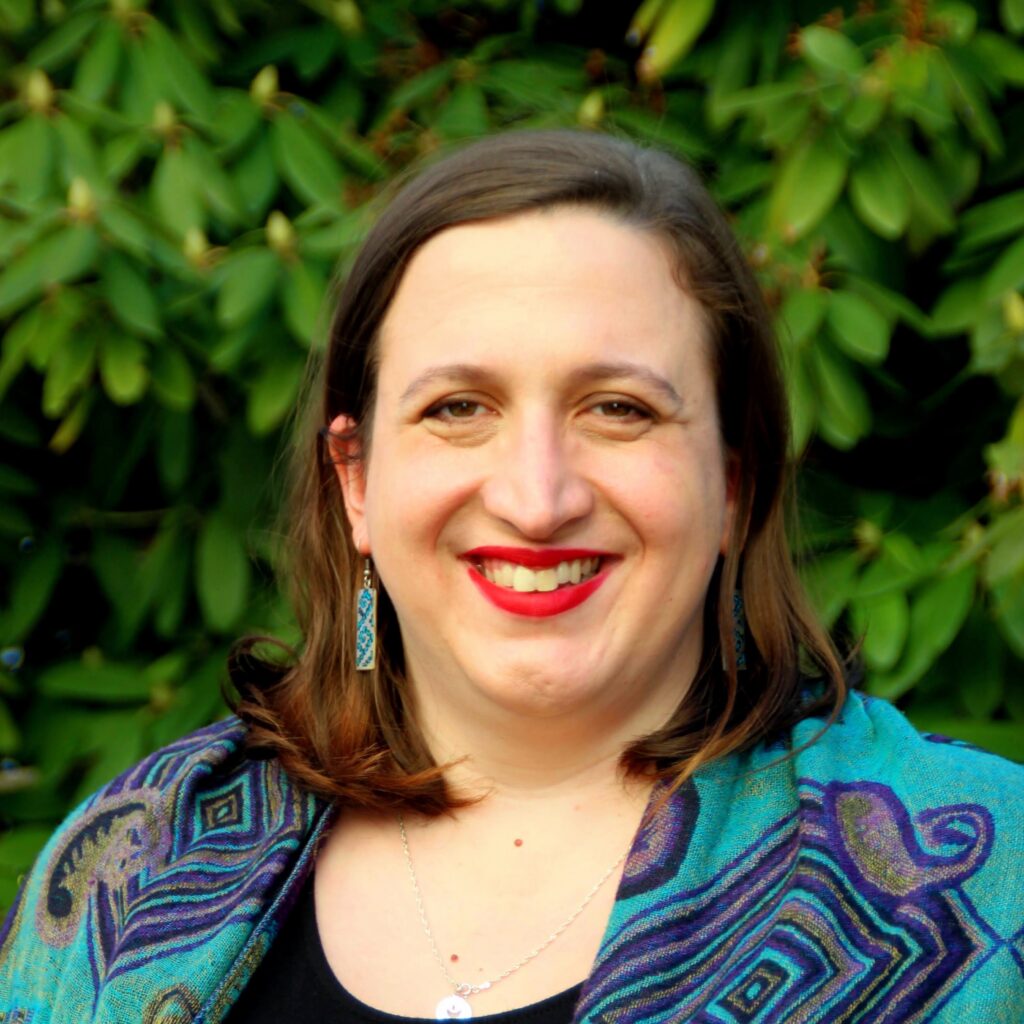
This page provides a brief summary of the project and its findings; for more information and full results, please download the full report.
Introduction
Academic anthropological research is largely dependent on funding from governmental agencies and foundations. Unfortunately, funding and research opportunities may be distributed inequitably due to the effects of systemic racism, sexism, heterosexism, classism, and ableism. This project investigates the demographics of anthropologist grantees and the equity of grantmaking processes in order to propose actions that granting agencies may take to distribute funding more fairly.
During the 2020–2021 academic year, representatives of the major funders of archaeological research in the United States held a series of meetings with the leaders of the Society of Black Archaeologists and the Indigenous Archaeology Collective to discuss how to improve the inclusivity and equity of their granting practices. One result of these conversations was this project, which was commissioned by the Wenner-Gren Foundation with support from the Social Science Research Council.
Research Questions
This research project addresses two sets of research questions:
1. What are the demographics of anthropology research grant applicants and recipients? How do they compare between different subfields, funding agencies, and types of grants? How do they compare to the demographics of anthropology, academia, and society more broadly?
2. What factors affect anthropologists’ decisions about whether to apply for funding, where to apply, and how to frame their research? How are these processes shaped by identity and structures of oppression?
Methods
This study used an anonymous survey to collect data from anthropologists from across the four subdisciplines and from various career stages about how they approach funding their research. To recruit participants, we first asked a variety of anthropological professional organizations to distribute the recruitment text to all members. We collected 920 responses via professional organization recruitment. Once the survey had begun, we received feedback from anthropologists who were not current members of professional organizations We wanted to include the perspectives of these people, so we modified the survey to include anyone who had been a member of any of the organizations at any time in the past five years. The survey was then advertised via Twitter and Facebook. Some 237 responses were collected via social media recruitment. The survey was open from August 18, 2021 until October 21, 2021, and received a total of 1157 responses. The Institutional Review Board of the University of Massachusetts Boston determined that this project was exempt from full-board review on July 28, 2021 (study number 2021137). For a fuller description of methods, please download the full report.
Summary of Results
Demographics
GENDER AND SEXUALITY: The respondents were primarily cisgender women (58.7%) and majority were heterosexual (78.76%).
NATIONALITY AND RACE: The majority were from the United States (86.12%) and of the people from the U.S., 87.19% were white. Of those from other countries, 29.49% identified as being from a marginalized or minoritized group (table 1.08).
EDUCATION AND FAMILY BACKGROUND: A majority (63.43%) held Ph.D.s, but respondents ranged from current undergraduate students through Ph.D.s, with a handful (1.16%) of respondents holding professional degrees other than a Ph.D. Approximately one in four respondents (25.67%) had been first-generation bachelors recipients, and 14.27% had at least one parent with a Ph.D.
DISABILITY: Approximately one in four respondents (24.78%) had a disability.
AGE: Respondents ranged from a few under the age of 23 (0.54%) to 11.96% in their sixties. The majority (52.68%) were in their thirties or forties.
CURRENT AFFILIATION: A majority were affiliated with research universities (43.43% public, 12.78% private), with smaller numbers affiliated with 4-year colleges (7.86% public, 7.06% private) and community colleges (1.43%). 8.67% were affiliated with government agencies, 8.49% with nonprofits, and 11.44% with for-profit businesses. Among academics, respondents included students ranging from undergraduates through Ph.D. candidates, and all kinds of faculty and staff. The largest groups were tenured faculty (29.55%), tenure-track faculty (15.41%), and doctoral students and candidates (23.95%). This suggests that our strategy of recruiting through professional organizations favored those with stable academic positions over contingent academics, undergraduate and master’s students, and anthropologists working outside academia.
INTERSECTIONAL RESULTS: There were a variety of statistically-significant correlations between different forms of identity. In most cases, privileged identities in one category correlated with privileged identities in another, and marginalized identities in one category correlated with marginalized categories in another. Cisgender men were more likely than cisgender women to be heterosexual. Among people of other genders, the vast majority were non-heterosexual. Cisgender men and cisgender women were more likely than people of other genders to be white. Cisgender men and cisgender women were more likely than people of other genders to be non-disabled. White people were more likely than nonwhite people to be heterosexual. Heterosexual people were more likely than non-heterosexual people to hold a Ph.D. Heterosexual people were more likely than non-heterosexual people to have at least one parent with a bachelor’s degree, and to have at least one parent with a Ph.D. Heterosexual people are more likely than non-heterosexual people to be non-disabled. White people were more likely than non-white people to hold a Ph.D. White people were more likely than non-white people to have parents with higher educational attainment, including bachelors’ degrees, master’s and professional degrees, and Ph.D.s. White people were more likely than non-white people to be non-disabled. Among people from countries other than the U.S., nonminoritized people were more likely than minoritized people to have parents with higher educational attainment, including bachelor’s degrees, master’s and professional degrees, and Ph.D.s. People from the U.S. were more likely than people from other countries to have parents with bachelor’s, master’s, or professional degrees, but people were equally likely to have parents with Ph.D.s across nationalities. People who had at least one parent with at least a bachelor’s were more likely than people with no parents with a bachelor’s to hold a Ph.D. Also, people who had at least one parent with a Ph.D. were more likely than people whose parents did not have Ph.D.s to have a Ph.D. themselves. Non-disabled people were more likely than disabled people to hold a Ph.D.
Demographic Differences Among Subfields and Sectors
Archaeology had the lowest percent of cisgender women while biological had the highest. Archaeology had the lowest percent of non-heterosexual people, while sociocultural had the highest. Among people from the U.S., archaeologists were more likely than sociocultural or biological anthropologists to be white. Among people from other countries, sociocultural anthropologists were more likely than archaeologists to be minoritized. Sociocultural anthropologists were most likely and archaeologists were least likely to be from a country other than the U.S. Sociocultural anthropology had a higher percentage of Ph.D. holders than either biological anthropology or archaeology. Archaeologists were more likely than sociocultural and biological anthropologists to have been first-generation bachelor’s degree recipients. Biological anthropologists were more likely than archaeologists and sociocultural anthropologists to have at least one parent with a master’s or professional degree, but less likely to have at least one parent with a Ph.D.
There were some significant correlations between identity and professional affiliation. The public sector and other sectors had higher percentages of cisgender men than the academic sector. Respondents in the academic sector had parents with higher levels of educational attainment than respondents in the public sector or other sectors. Research universities had higher percentages of cisgender men than four-year colleges. Research universities had higher percentages of non-U.S. respondents than four-year colleges. All public-sector non-heterosexual respondents worked for the federal government rather than state or local governments.
Experience with Funding
Approximately 3 out of 4 respondents (76.20%) had applied to at least one of the funding agencies listed for funding. The most popular sources to apply to were the National Science Foundation (76.90%, mostly for dissertation research, post-Ph.D. research, or graduate school tuition and expenses) and the Wenner-Gren Foundation (64.57%, mostly for dissertation research and post-Ph.D. research). The many “other” and write-in answers suggest a wide variety of funders that anthropologists apply to.
The factors that most influenced applicants’ choices about where to apply were “fit between your research and what the agency funds” (average rating of 4.51 on a 1–5 scale), “eligibility requirements for applications” (4.32), “amount of funding available” (3.67), and “encouragement from a mentor or colleague” (3.4). The least influential choices were “requirement for a program or course” (1.77), “advertisement or outreach by granting agency” (1.8), “services additional to funding provided by the granting agency” (2.1), and “previous rejections from other granting agencies” (2.22). “Previous positive experience with granting agency” (2.71), “amount of work required to apply” (2.58), and “prestige of granting agency” (2.49) were moderately influential.
The support that applicants found most useful were “reading successful proposals from colleagues” (average of 4.26 on a 1–5 scale) and “feedback from a mentor or colleague” (4.19). The other forms of support were less highly rated, but still had an average of more than 3 out of 5: these were “meeting or conversation with granting agency staff,” “informational material on the granting agency’s website,” “workshop or information session provided by granting agency,” and “grantwriting course or workshop provided by your university.”
Those who have not applied for funding from any of these agencies were asked why. The most common reasons were “My job or other responsibilities do not give me sufficient time and/or support to conduct research that would need funding from these agencies” (42.02%) and “My research is funded by my employer” (33.07%). Some respondents checked “I am too early in my anthropology education or career to need funding” (16.34%). Others checked “I believe that these agencies would not fund the kind of research I conduct” (22.96%), or “I feel too intimidated to apply” (22.96%).
Dynamics of the Granting System
Although more than ¾ of respondents had applied for funding from at least one of the funding agencies listed, the extensive lists of other funders listed in write-ins suggest that anthropologists tend to be resourceful in their funding applications, applying to a wide variety of foundations whenever they can find a program that might fit their research. More research is needed to understand just how much anthropological research is being funded by sources other than the most common anthropology-and archaeology-focused foundations.
Fit and eligibility were the most important factors in determining where respondents would apply for funding. For those who had not applied for funding from any of these funders, lack of time and support in their jobs was the most common factor in that decision.
The most helpful resources for applicants seem to be access to expertise about the specific grant opportunities: this took the form of reading successful proposals, mentorship, and even (in the case of one write-in) serving as a reviewer. Conversely, those who had not applied to any of the listed funders cited factors such as not knowing about these funding opportunities and not having mentors teach them to write grants.
Many respondents who were not Ph.D. candidates or research university faculty expressed feelings of exclusion from grantmaking. Some expressed frustration that many research grants only accept applications from Ph.D. students and holders of Ph.D.s, excluding master’s students and professionals who do not hold Ph.D.s. Another noted that funding for dissertation research is generally separate from funding that actually pays graduate student researchers: thus, even if a Ph.D. candidate holds dissertation grants from multiple agencies, they may find themselves unable to pay their rent. This leaves Ph.D. students in the difficult situation of needing to find both fellowships to live on and research grants to pay for travel, equipment, analyses, etc. Similarly, some CRM archaeologists, government employees, and teaching-focused faculty members lack the workplace support to apply for grants, reinforcing a status quo in which only those with long-term affiliations at prestigious research universities are able to obtain funding.
Although most respondents said that at least some of the feedback they have received from peer reviewers has been helpful, many had also or only had negative experiences with receiving feedback on their proposals. Vague and brief reports are common, and some had received hostile or hateful comments as well. Some blamed granting agencies for failing to solicit constructive feedback or for passing along hostile feedback to authors, while others placed responsibility on the shoulders of the reviewers themselves. Others had never had access to reviewer comments, making it difficult to revise and resubmit grant proposals. Men had more positive experiences than women, and non-firstgeneration scholars had more positive experiences than those who had been first generation college students, suggesting that systemic oppression shapes the feedback that marginalized people receive, and the circumstances in which they work while they receive it.
Most respondents’ grant application strategies fell into one of three categories: “apply for everything,” “apply strategically,” or “avoid having to apply.” Applying strategically was most common overall and was more common among older respondents. Much of the advice respondents shared for early career anthropologists depended on the strategies they followed themselves. Other common themes in the advice included acknowledgments of the inequity of the system and exhortations to persist despite that inequity.
Profiles of Black and Indigenous Respondents
Because this research was commissioned as the result of collaborations between the Wenner-Gren Foundation, the Society of Black Archaeologists, and the Indigenous Archaeology Collective, I include a section specifically examining the experiences of Black and Indigenous respondents. There were 40 respondents (3.46%) who checked the “Black, African American, and/or Afro-Latinx” box and 23 respondents (1.99%) who checked the “American Indian, Native American, First Nations, and/or Alaskan Native” box in the Race and Ethnicity question (only visible to those from the United States). Responses to open-ended questions by Black and Indigenous respondents tended to convey even more frustration with the status quo of anthropological research funding than the general population’s responses.
Black respondents were statistically significantly more likely than non-Black respondents to be disabled, under the age of 40, affiliated with a university or college, students, sociocultural anthropologists, members of the AAA, members of the SHA, and non-NSF applicants. Black respondents were particularly focused on access to mentorship, feedback, and examples of successful proposals as important elements of successful application processes.
Indigenous respondents were statistically significantly more likely than non-Indigenous respondents to be non-Ph.D. holders and members of the RPA. Indigenous respondents were particularly concerned about proposal assessment by funding agencies, with many experiencing racism from reviewers and granting agency staff. Many felt that their proposals had been reviewed by people who were not qualified to assess Indigenous archaeology projects.
Suggestions for Funding Agencies to Improve Diversity and Equity
This section includes a number of suggestions for funding agency staff; I acknowledge, however, that not all of these ideas will be workable for all agencies, especially because government employees are limited by a variety of regulations.
Most funding agencies have equitable practices of reviewing applications and awarding grants. However, the survey results suggest that the National Endowment for the Humanities, National Geographic Society, National Science Foundation, and Institute for Advanced Study may have grantmaking practices that give preference to some anthropology and archaeology applicants over others based on gender, race, and/or class (table 2.13). I encourage the staff at these organizations to examine their own internal data to determine if this is the case beyond the scope of this survey; if it is, I encourage them to modify their practices to ensure that all applicants have an equal chance at funding, regardless of their identities.
In the review process, funders should attempt to identify reviewers who are committed to providing thoughtful and constructive feedback. It may be helpful to ask senior and well-established reviewers to sign their reviews, or to assign marginalized applicants’ proposals to at least some reviewers who share the applicant’s marginalized identities. When reviewers give vague, brief, or hostile feedback, they should not be asked to review again, and rude or hateful comments should not be forwarded to applicants. With this exception, however, all applicants should have the opportunity to read and learn from the comments that reviewers have written. Furthermore, funding agency staff should be transparent with applicants about the decision-making process, as many respondents found it frustrating to receive a rejection letter with uniformly positive reviews attached: this mysterious situation makes it difficult to move forward in seeking funding.
Eligibility and the fit between their research and what an organization funds were the primary factors affecting how respondents choose where to apply for funding. Therefore, I encourage funders to examine whether their eligibility guidelines can be expanded to include more marginalized people. I also suggest ensuring that the information they disseminate about funding opportunities accurately reflects the breadth of the types of research they fund, so that all applicants can make educated choices about fit. This information should be disseminated in ways that target organized communities of marginalized scholars in order to make sure that it is made available to potential grantees who might not otherwise encounter it. Some funders may even be interested in expanding or modifying the types of research that they fund in order to encourage a more diverse applicant pool.
Funders should consider modifying the guidelines about what kinds of expenses can be covered by grants, as well. These should include course buyouts to allow scholars at teaching-intensive colleges and universities to have time to conduct research; childcare and eldercare; expenses for children and co-parents to travel to field sites; and salaries for graduate students so that they can focus on research rather than having to work other jobs to pay for living expenses when not in the field. Allowing grantees who have teaching-intensive positions to spread the funding out over more time would make it more possible for them to conduct research despite limited time during the semester.
Earmarking some funding for scholars from minority-serving institutions (Historically Black Colleges and Universities, Tribal Colleges and Institutions, and Hispanic Serving Institutions) would ensure that students at these colleges have opportunities to work with faculty who conduct research, building pathways into research careers for these students.
Many respondents recommended providing clear and easy-to-read websites that make explicit what the eligibility requirements, proposal guidelines, and metrics for judging proposals are. Several also recommended publishing successful proposal examples, evaluation rubrics, success rates, and the demographics of grantees on such a website. Respondents reported that the most helpful supports in applying for funding are reading successful proposals and having a colleague or mentor comment on draft proposals or applications. Accordingly, I suggest that funding agencies make a selection of recent successful proposals available to applicants. With the recipients’ approval, these could be made available on funder websites or, as the Wenner-Gren Foundation has done, on repositories like the Digital Archaeological Record (Wenner-Gren Foundation and the Center for Digital Antiquity n.d.). For more privacy, agencies could add a note to their website saying that example successful proposals will be made available upon request.
Although funders cannot change their applicants’ access to mentorship through their institutions, they can potentially make mentorship available to applicants. I suggest that funders ask recent grant recipients if they would be willing to mentor a small number of applicants through the process, allow applicants to sign up for this mentorship in advance, and then match mentors with mentees based on their specializations or interests. Clear and explicit guidelines about how much and what kinds of work mentors are expected to provide would help ensure that all participants in such a program have reasonable expectations.
Suggestions of Actions Anthropologists in Various Positions can take to Improve Diversityand Equity in Anthropological Research Funding
ALL ANTHROPOLOGISTS: Share your successful and unsuccessful proposals and any feedback you receive with colleagues interested in applying for the same grants. Form relationships with colleagues and mentors/mentees to provide each other constructive feedback on grant proposals. Advocate for any of these suggestions with people in your networks who hold relevant positions to implement them.
MENTORS OF GRADUATE STUDENTS AND EARLY CAREER RESEARCHERS: Proactively help mentees plan ahead to apply to grants for their research. Provide constructive and respectful feedback on mentees’ proposal drafts. Share your stories of success and failure in funding applications with mentees to demystify the process. Include mentees in the process of writing grant applications for projects in which they will participate.
ADMINISTRATORS OF DEPARTMENTS AND PROGRAMS: Ensure that your program offers a proposal-writing course and encourage/require graduate students to take that course. Create and circulate a list of which faculty, students, and recent alumni/ae have received funding from or been reviewers for which funders, so that prospective applicants can reach out to them for support. Gather a library of successful proposals by faculty, students, and alumni/ae, and make it available to students and faculty. Invite funding agency staff and/or colleagues who have served as reviewers to present professional development workshops for students and faculty. Raise funds and provide small seed grants for pilot projects that can form the basis for larger grant-funded projects by faculty and students. Ensure that mentorship is fully recognized and valued in tenure and promotion criteria.
PROFESSIONAL ORGANIZATION STAFF AND LEADERSHIP: Invite funding agency staff, colleagues who have served as reviewers, and/or colleagues who have been particularly successful in obtaining funding to present professional development workshops at conferences. Workshop participation should be included in conference registration: build the cost into the conference budget or fund-raise as necessary. Do not schedule these workshops for the days before or after the main conference, as this requires attendees to pay for extra days of travel and arrange coverage for childcare, eldercare, teaching, and/or other obligations. Create and circulate a list of members who have received funding from or been reviewers for particular funders and are willing to talk to prospective applicants. Gather a library of successful proposals by members and make it available to members. Raise funds and provide small seed grants for pilot projects that can form the basis for larger grant-funded projects. Create mentorship programs where students and early-career researchers can be paired with more senior researchers who are willing to provide advice and feedback on draft proposals.
REVIEWERS: Provide respectful and constructive feedback on proposals. Think carefully about whether you are qualified to review a particular proposal, especially if its political or theoretical framing is very different from yours: if not, suggest another reviewer. Talk openly with your students, mentees, and colleagues about the process of reviewing and what reviewers look for in proposals.
Equity in Research Funding in Anthropology: Reflections from the Archaeology Centers Coalition
The Archaeology Centers Coalition (ACC) was founded in July 2020 in response to urgent calls to address systemic racism in all spheres of institutional life. The coalition was established in order to find ways for member organizations to work collectively to more effectively move archaeology towards greater inclusivity. Since the 1950s, archaeologists have understood quite well that our understandings of the past are predicated not only on what we find in the ground but also who narrates the assemblage.
The initiative emerged out of conversations among the Society of Black Archaeologists (SBA), the Indigenous Archaeology Collective (IAC), the Wenner-Gren Foundation, SAPIENS, and the Cornell Institute of Archaeology and Material Studies (CIAMS). As institutional loci of undergraduate recruitment, graduate student training, and faculty development, archaeology centers have a vital role to play in efforts to forge a discipline that is more diverse and equitable. The continued relevance, vitality, and excellence of archaeological research in North American institutions can only be sustained by expanding the stories that we tell, drawing in new audiences to hear them, and welcoming new voices to tell them.
At present, the ACC includes 17 institutions of archaeological training and research in North America. To date, the coalition has released a report on the hidden costs of archeological field schools and a statement on how institutions should evaluate engaged archaeological research in tenure and promotion. The ACC also has a survey for which we are currently collecting responses that examines the culture of field schools as a potential roadblock to greater diversity. These efforts are intended not just to document problems in the field of archaeology but to also serve as roadmaps to change. It is, after all, not enough just to identify problems related to systemic racism and other inequities in archaeology; we must also try to transform our practices and hold ourselves accountable.
We thus read Heath-Stout’s report with great interest. It, too, serves as a roadmap, clearly outlining the deficiencies in current archaeological funding schemes, but also defining concrete steps that can help ensure that archaeological research is not fundamentally skewed by roadblocks that discourage inclusion. Our main goal should be to lower barriers to funding, and Heath-Stout uses her data to point the way.
In particular, there are two areas where academic centers of archaeological training must contribute to improving the funding process. First, we must teach our students how to give feedback. There seems to be an endemic sense in the discipline that reviewing grant proposals is a gatekeeping activity. Hence it seems to bring out the worst in some, leading to proposal reviews that wound rather than inform. We need to make clear that grant reviewing is a pedagogical process, just like being in the classroom. The cloak of anonymous review is not an excuse for cruelty. Anonymity provides important protections against retaliation and can help both build and preserve professional relationships. But to weaponize anonymity as an opportunity for caustic insensitivity is inexcusable. Much of our training seemed to be only on the consumer side of feedback, advising us to toughen up or thicken our skin in advance of receiving reviews.
But to break this injurious habit in grant reviews we need to teach our students not how to be less sensitive, but how to be more sensitive. We must show them the difference between constructive and destructive feedback and give them opportunities to practice. The central motivating ethos of this instruction must be that reviewing grants is NOT a practice of gatekeeping, but an opportunity for instruction, for helping archaeologists of all ranks develop, hone, and improve our collective research. And like all teaching, it is best accomplished from a position of humility, as the constructive suggestions that can advance our collective effort to continuously improve methods, practices, and reasoning.
We have all received bad, unhelpful, overly-critical grant proposal reviews. It comes with the territory. A rite of passage. You learn to deal with them and move on. That attitude works when one is already operating from a position of relative power and entitlement. But we can imagine what such reviews are like for graduate students or faculty from marginalized communities. Actually, we do not need to imagine; we can read the comments in Heath-Stout’s report. Accepting the status quo simply perpetuates the problem. Some first-time applicants give up. But many, across the field, learn that writing wrecking-ball reviews (of grant proposals, but also manuscripts) is normal–perhaps even desirable–and the practice endures.
The continuance of caustic review practices to us also suggests a rather troubling failure in academic structures of mentoring. Mentoring must involve not only developing archaeological practices and skills. It must also professionalize students in the expectations of civil discourse. We assume that no one wants to train students to be lousy colleagues, and yet often we are so focused on training the archaeologist that we neglect the wider training of the professional. Moreover, in providing better mentoring to students, we seek to also improve their ability to mentor the next generation. So much of our own mentoring practices arise from how we were mentored. This effectively ensures that our own approaches to mentoring students are (at least) a generation behind current best practices. We need to make learning how to mentor and be mentored a more thoughtful part of archaeological training. It should be noted that the COVID epidemic severely impacted mentoring as relationships were flattened to fit the Zoom screen. But this is an opportunity to think carefully about how we mentor better. And Heath-Stout’s report shows us why it is so vital, connecting mentoring not just to the fate of one student, but to the collective fortune of the discipline.
We thus echo Heath-Stout when we suggest that:
- Agencies should police reviews and reviewers. Reviews that are not at all constructive or are overly harsh should not be sent on to applicants, and the reviewers should be stricken from the rolls. To those naysayers who argue that “healthy” criticism is part of the scientific review process, we would say that there are certainly ways to criticize a proposal constructively without destroying someone’s sense of self esteem. But writing such reviews is a skill one must learn, so…
- Graduate students should be taught, as part of professionalization efforts in their graduate programs, how to read and write proposal reviews. Good behavior must be modeled by professors for their students. And finally…
- Applicants should be offered mentors who can help them interpret reviews. Those of us who have already run the funding gauntlet need to step up and help first-time applicants. This is particularly the case for applicants who may be at small and/or under-resourced institutions, where in-house mentoring is not available.
In closing, we commend Heath-Stout and Wenner-Gren on an incisive, insightful, eye-opening report and we sincerely hope our colleagues read it and work to improve the kind of training in reviewing and mentoring that we suggest here. The ACC has already begun to discuss how we can collectively improve mentoring practices. And based on Heath-Stout’s work, we are also ready to collaborate with funding agencies to teach best practices in grant reviewing. If you are a student or junior faculty member, ACC members are ready to help. There is a list of ACC archaeologists ready to mentor colleagues available on our website.
Adam Smith is Professor of Anthropology at Cornell University, and Michael Galay, Professor of Anthropology at the University of Michigan
Research Funding in U.S. Academic Anthropology: A Black Anthropologist’s Perspective
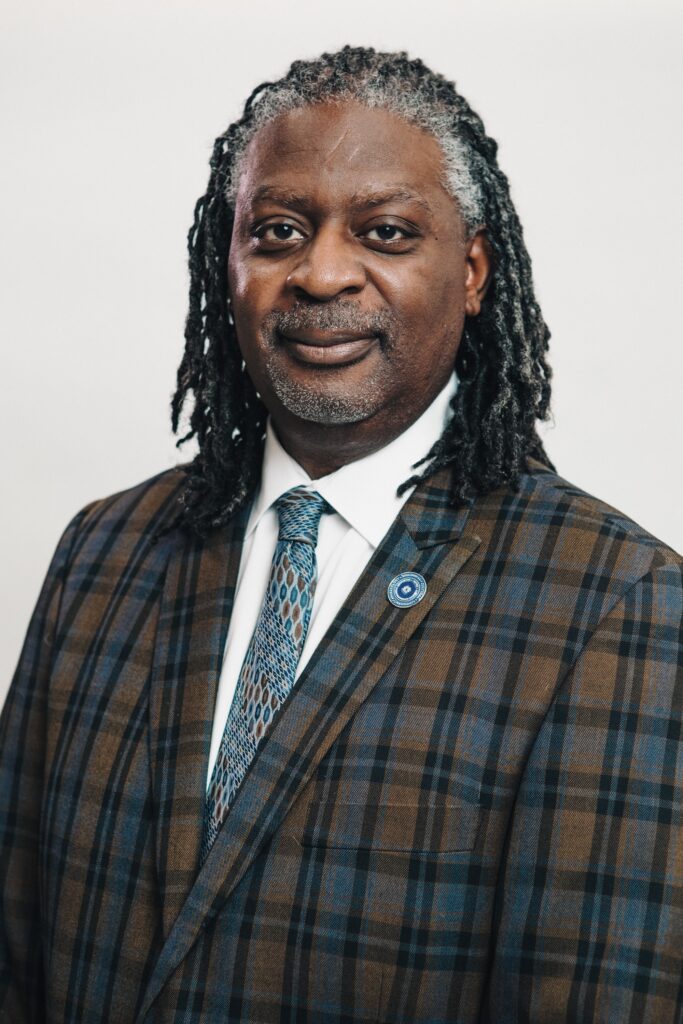
This study offers an important look into the demographics and factors related to funding. As a Black anthropologist and immediate past president of the Association of Black Anthropologists, I was very appreciative of the intersectional approach of the study and the recommendations of Dr. Laura Heath-Stout, the study author, offered regarding ways to make anthropological funding more equitable. For instance, excluding reviewers who offer “vague, brief, or hostile feedback” or use rude or hateful comments (which is unprofessional, racist, sexist, and ableist among other things) in their assessment of scholarly work is commendable. Also, earmarking funding for minoritized applicants from Historically Black Colleges and Universities, Tribal Colleges and Institutions, and Hispanic Serving Institutions would also be helpful in making more opportunities for non-white applicants to become anthropologists.
In addition to these and other report recommendations, I would add that there needs to be a continuing effort in racially diversifying the discipline of anthropology as well as supporting the research of BIPOC anthropologists with adequate funding. We also need to encourage anthropological institutions, such as the Association of Black Anthropologists, the American Anthropological Association, anthropology departments, and anthropology student organizations, to conduct more outreach about the discipline. I also recommend that these different organizations and institutions employ intersectional approaches and logics to encourage the diversification of anthropological subfields, as there tends to be a representational imbalance which skews towards sociocultural anthropology to the detriment of the other subfields (archaeology, biological, linguistic, and applied/practicing). We also need more reviewers and staff of color at both the major funding agencies (NSF and Wenner-Gren) to increase the number of opportunities for minoritized anthropologists.
Hopefully, these combined recommendations, if acted upon, can move us in the direction of more scholarship being funded.
Bertin M. Louis, Jr. is Associate Professor of African American and Africana Studies at the University of Kentucky.
Thinking Through Big Problems In Community
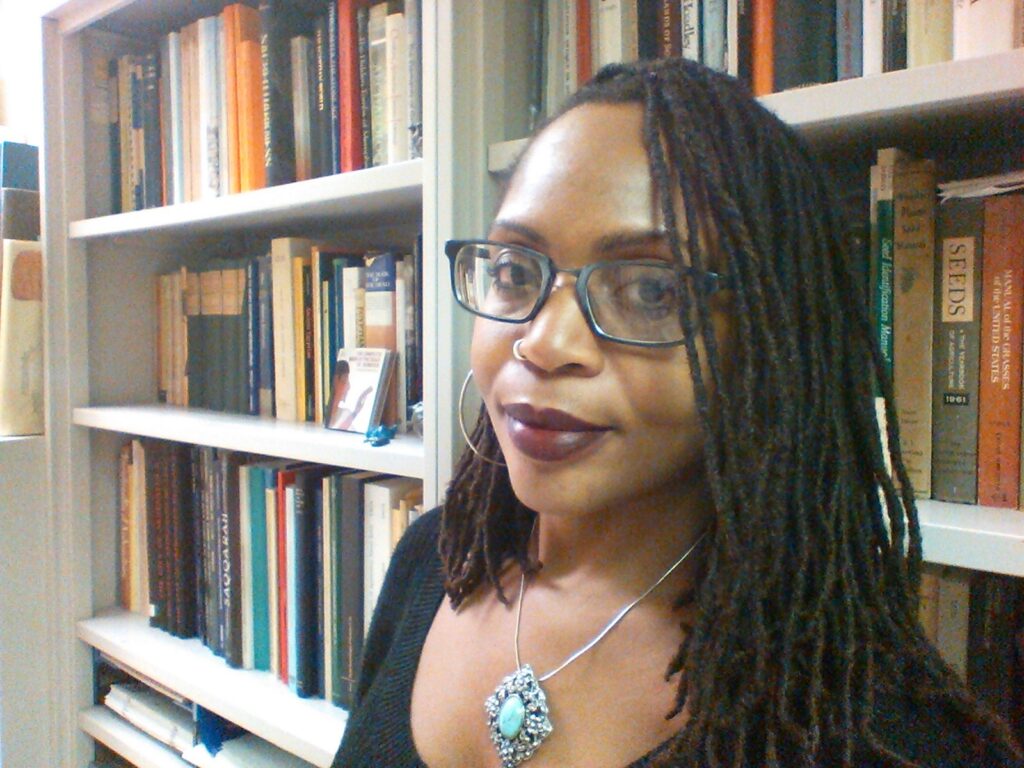
I began reading this report with some skepticism. So many of anthropology’s inequities are by design. Much like the last respondent quoted on p.109–110, I’ve grown wary—and weary—of people saying they want to make things better while simultaneously gatekeeping and forcefully protecting the status quo. I’ll admit that well-meaning people are sometimes unaware of how they can sabotage diversity efforts with narrow, outdated, and unexamined views about what they believe anthropology and archaeology should be. For those that don’t want to be that person, read this report with a highlighter. Mark every passage or stat that makes you feel any discomfort, and then sit with that discomfort in private, fighting that knee-jerk urge to argue that the respondents were exaggerating or have somehow misunderstood their own lived experience in this field.
So many respondents expressed the desire to learn how to craft better grant proposals. In my experience, one reason why samples of successful proposals are not readily available is that they are fiercely protected as a resource that successful scholars share within their lab groups or among their intellectual offspring. The state of the academy and the academic job market has imbued us all with a sense of scarcity, and that scarcity has us in a chokehold. This is another one of those “elements of academic life under neoliberal capitalism” (p. 94), so aptly mentioned by the author. I do not know many scholars who feel so safe and secure that they can share their winning strategies outside their official mentees. I hate this, but I fully understand why so many scholars are playing defense in this climate.
Several of the suggested changes given by respondents would benefit any scholar, not just people from underrepresented or marginalized populations. For instance, I think that additional/rolling deadlines, and more transparency about agency preferences are a definite win for everyone. I love the idea of graduated or escalating funding, with funding for pilot projects being more accessible with a less intimidating process.
I also love the idea of nasty people being culled from the reviewer pool. I’m grateful that this study brought this issue to the table so that it could be addressed more openly. Asking senior reviewers to sign their name, as was suggested, might prompt certain people to recuse or cull themselves, since anonymous reviewing seems to tempt a few people to behave without decorum or sense.
I’m also happy to see the importance of mentoring highlighted in this report. The data given here show that Black and Indigenous respondents are comparatively young. If we want our field to thrive, mentoring must be a guiding principle.
Overall, getting a glimpse of my fellow anthropologists, seeing their resilience, determination, grace, makes me quite proud to be among them and hopeful for our future. The surplus of insightful suggestions in this report highlights the power of thinking through structural inequities in community. To quote an ancient African American proverb by writer Clint Smith, “We tried to tell y’all.”
Shayla Monroe is Assistant Professor of Anthropology at Harvard University.
Towards Equity in Anthropology Research Funding: Interrogating Corollary Dynamics and Pathways to Reform
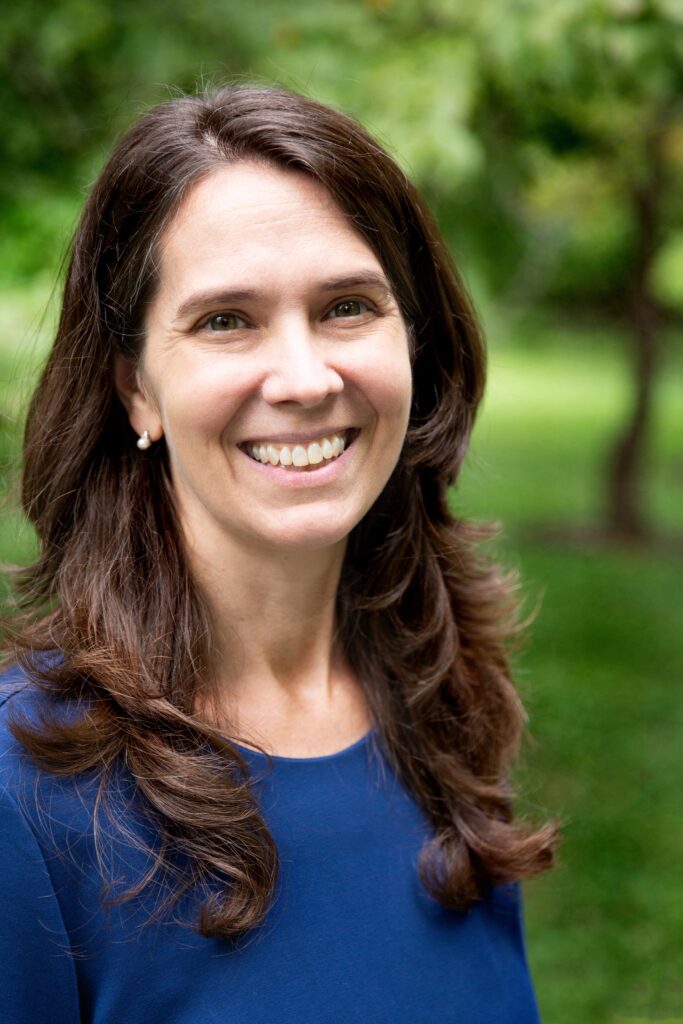
Disentangling patterns of anthropology research funding is a mechanism for understanding inequities in the discipline. While seemingly straightforward, the curvatures of corollary relationships prompt us to consider innovative and possibly radical ways of ameliorating disparities, as demonstrated in the “An investigation of the demographics and processes of research funding in U.S. academic anthropology” report.
The report documents that access to grant funding is co-related with identity, parent’s educational background, current employment, and mentorship. The continued maintenance of inequalities prompts us to consider the possibility of reforming the political economy of grantmaking authorities and professional organizations. Who or what has the power and the authority to establish more equitable grantmaking processes? Where can transformation for equity occur? What holds anthropology back from achieving equity in research funding in the U.S.?
This report can serve as an essential benchmark as the discipline considers future directions for action and evaluation related to grantmaking. In addition, it is a departure point for deeper inquiry into patterns of funding. For example, how can we make visible the anthropologists who do research that may not be considered “research anthropologists?” How can we make sense of and support anthropologists who report that they are overburdened with other job responsibilities to pursue research funding? What authentic partnership opportunities between funding agencies and professional organizations are possible, and will they yield equitable results?
The Wenner-Gren Foundation can take the lead among funding agencies to meet anthropologists where they are. Grantmaking agencies hold profound power in shaping the anthropological discipline through funding. As institutional support from academic, non-profit, and business/corporate organizations decreases research funding and fiscal support for professional organization membership and conferences, there is an increasing call for grantmaking agencies to be responsive to the needs of anthropologists. This report documents the need for transformation and responsiveness and advances the dialogue for a more equitable anthropology.
Jennifer R. Wies is Associate Provost for Academic Studies and Professor of Anthropology at Eastern Kentucky University.
Disabling Anthropology
The Steering Committee of the Disability Research Interest Group (DRIG) of the Society for Medical Anthropology is very grateful to have been asked to provide a comment on An Investigation of the Demographics and Processes of Research Funding in U.S. Academic Anthropology. We thank and commend Dr. Heath-Stout, the Wenner-Gren Foundation, all of the participating AAA sections and communities, as well as the individual survey participants, for your efforts to improve equity and diversity in research funding. We look forward to next steps and affirm our support for proposed measures in the “Suggestions for Funding Agencies to Improve Diversity and Equity” section (p.15).
From the perspective of DRIG, we think it is important to draw attention, especially, to one seemingly simple finding: 27% of all respondents identified themselves as having a disability of some kind. This is one in four respondents (table 1.14), which makes clear that people with disabilities are a large and heretofore largely neglected minoritized population within academic anthropology. While this statistic may surprise some, it is a number very much in keeping with the overall adult population in the United States, as well as global estimates. For future survey iterations, we do note that the form of Q13, which asks for a “yes” or “no” response may not reflect the multiplicity of relationships to the category “disability” among respondents; for instance, d/Deaf and Hard of Hearing individuals, as well as those with chronic illnesses, may have complicated relationships to this term.
As we continue to live through a mass-disabling pandemic, it is important that we recognize that the question of how anthropology must be remade to not only “accommodate” but welcome and celebrate disabled researchers for their unique contributions to our understanding of human life is crucial for the future of our discipline. Funding issues are central to how this remaking will happen.
As much recent research has shown, anthropology’s brand of academic ableism remains pervasive, if not field-defining. Though it is beyond the scope of this report, we note that there are few, if any, efforts underway within our field or its major funders to deeply consider how the question of funding dis(en)ables a large number of scholars with disabilities at every stage in the pipeline. At present, budget items for personal assistance, adaptive technologies, and supplementary medical care are, if not disallowed, certainly not encouraged in budget proposals; if they are present, other line items must be cut. For the most part, these financial – and emotional – costs are borne by the individual researcher, known by many as a “crip tax.” The impact of these de facto policies is undoubtedly most keenly felt by undergraduates, graduate students, and early career scholars.
We would love to see future research address anthropology’s ableism, with a focus on fieldwork. We note, for instance, that the National Science Foundation has a call for projects that improve the participation of people with disabilities in STEM fields, which includes social sciences; perhaps there is scope for a future collaboration between Wenner-Gren and NSF to enable this important study of methods, funding, and policy.
We would also like to draw attention to the important finding that respondents of color were more likely than others to report disabilities. There are clearly forms of intersectional oppression within our field that need to be addressed. Beyond the demographic insight, this data point suggests to us several questions that we would also like to see considered in future: Is it possible that the work of academic anthropology itself is disabling anthropologists in some cases? Is this happening at higher rates to individuals from racially and ethnically minoritized backgrounds?
Again, we are heartened to see the work Wenner-Gren is doing to address equity questions in anthropology. We look forward to the ongoing conversation about Dr. Heath-Stout’s findings and stress our admiration for her work here.
The Steering Committee of the Disability Research Interest Group includes Dana Ernst from the University of California, Berkeley and the University of California, Los Angeles, Zhiying Ma from the University of Chicago, Megan Moodie from the University of California, Santa Cruz, and Helena Fietz from Louisiana State University.
Gendered Funding Disparities Remain a Complex Problem
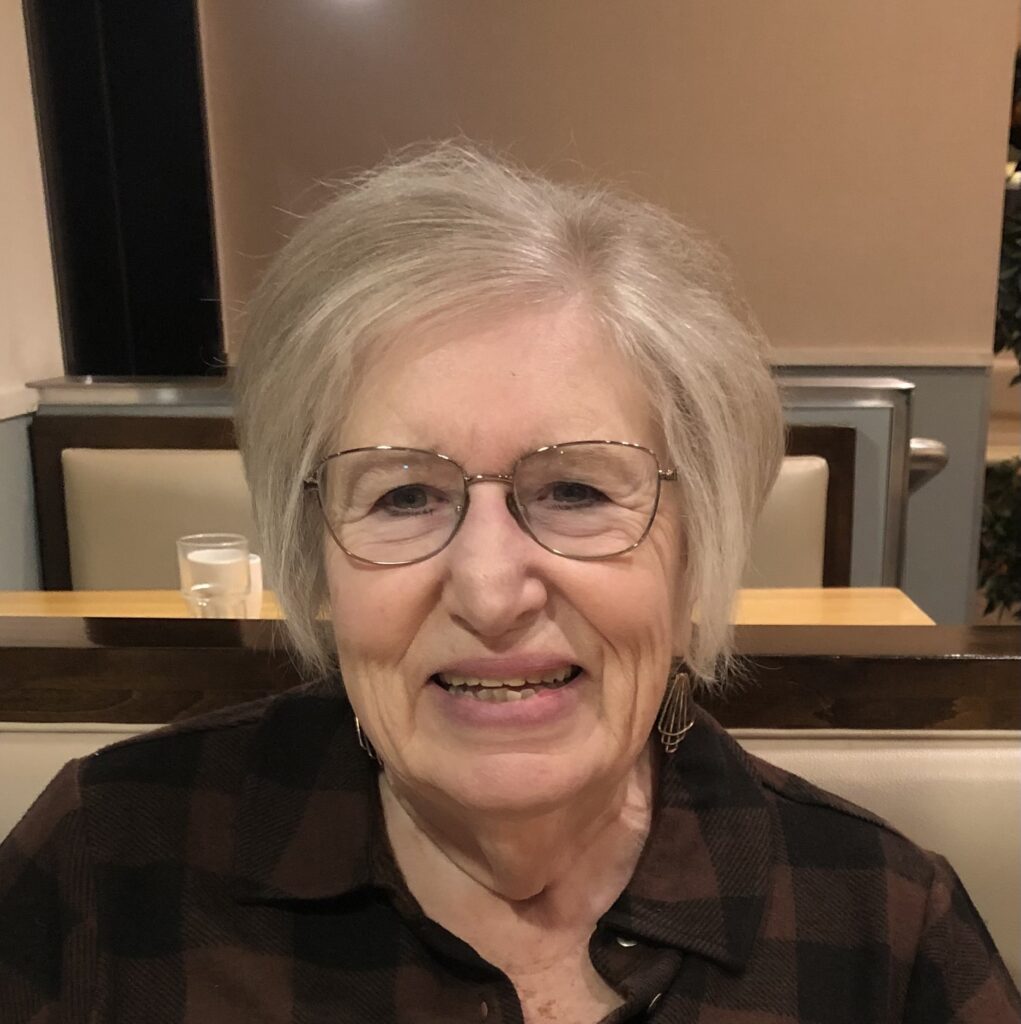
Laura Heath-Stout has done an impressive job examining a complicated subject—the demographics and processes of research funding in academic anthropology. As she notes in her introduction, academic anthropology is dependent on funding from governmental agencies and foundations. However, several years ago, staff at the National Science Foundation’s Archaeology Program realized that although women represented over 50% of PhDs in archaeology, as well as about half of all successful NSF dissertation grants, women represented a much smaller percentage of applicants for senior (post-dissertation) NSF grants. Wenner-Gren examined their records and found the same pattern for the same time period. The Society for American Archaeology decided to investigate the problem in 2013, and I was appointed co-chair, along with Barbara Mills, of a special task force to determine the nature of the problem as well as possible solutions (Goldstein et al. 2018). NSF funded our study (BCS-1449667).
Our work included questionnaires and surveys but relied more heavily on intensive interviews (we asked everyone the same set of questions, but the questions were open-ended so that interviewees could expand their responses). Heath-Stout also had open-ended questions, and the answers were also enlightening. We deliberately targeted those women who had successfully written and received NSF dissertation grants. These were people who knew how to write successful grants and were thought to be most likely to submit subsequent NSF proposals. Although both our study results and Heath-Stout’s results indicate that there is a problem, the problem is multifaceted. Within academia, women are not well represented at research-intensive universities, and given a variety of demands, many women practice what we termed “scaffolding” to integrate smaller pots of more easily accessible funding to accomplish their research goals. The task force provided specific recommendations, encouraging “academic advisers, mentors, granting agencies, editors, and others to be mindful that gender disparities remain a factor in professional trajectories and to consider how their actions and decisions can create more equitable participation” (Goldstein et al. 2018:18).
Our study suggested that additional research was important, and in my opinion, Heath-Stout’s study importantly expands that base. She includes a broader number and range of women, and specifically includes women with disabilities and women of color. One place that she did not focus on was archaeologists working in Cultural Resource Management (CRM) positions and, given logistic and other issues (including her broadening the work to include other types of anthropologists), this makes sense. However, on page 9 of her report, in her discussion of Table 1.25, Heath-Stout notes: “Since many worked in both the field and the lab, and many conducted digital research from offices or libraries, it seems that the field/lab binary commonly discussed since Gero’s (1985) germinal work on gender in archaeology no longer adequately describes the contexts in which archaeologists work.” I wonder whether things have changed or if the changes she sees are more a function of how questions are answered. While true, it is also the case that the National Science Foundation and other agencies tend to have a preference for funding field research, and often specifically do not fund lab research alone. Archaeologists often find that they must craft proposals to include field work, whether or not that is their primary focus. Archaeologists have long made the distinction between field and laboratory work, but I wonder if the answers to Heath-Stout’s questions represent a new reality or a strategic decision concerning how to present research and themselves. Given the increase in digital research, perhaps these distinctions are really not as important as they once were. Agencies are having to fund digital projects which may not include field research.
Significantly, lest people think that changes are not likely, we are in the midst of a sea-change in how anthropology is done, and I note that the National Geographic Society almost immediately incorporated one change that we (and Heath-Stout) recommended—childcare while in the field. The National Geographic Society has changed its grants program and now includes childcare as an allowable expense (Goldstein et al., 2018:17).
I doubt that Heath-Stout, or anyone who has tried to work through these issues, would suggest that more work is not needed. There are specific things to do NOW and there is still much to be learned. I applaud Heath-Stout for investing so much research effort into puzzling through and trying to resolve these issues.
Lynne Goldstein is Professor Emerita of Anthropology, Michigan State University.
Gero, Joan M. 1985. Socio-Politics and the Woman-at-Home Ideology. American Antiquity 50(2):342–50. https://doi.org/10.2307/280492.
Goldstein, Lynne, Barbara J. Mills, Sarah Herr, Jo Ellen Burkholder, Leslie Aiello, and Christopher Thornton. 2018. Why Do Fewer Women Than Men Apply for Grants After Their PhDs? American Antiquity 83(3):367–86. https://doi.org/10.1017/aaq.2017.73.
The Invisible Walls of Anthropology: Systemic Exclusion and the Need for Fundamental Change in Funding Practices
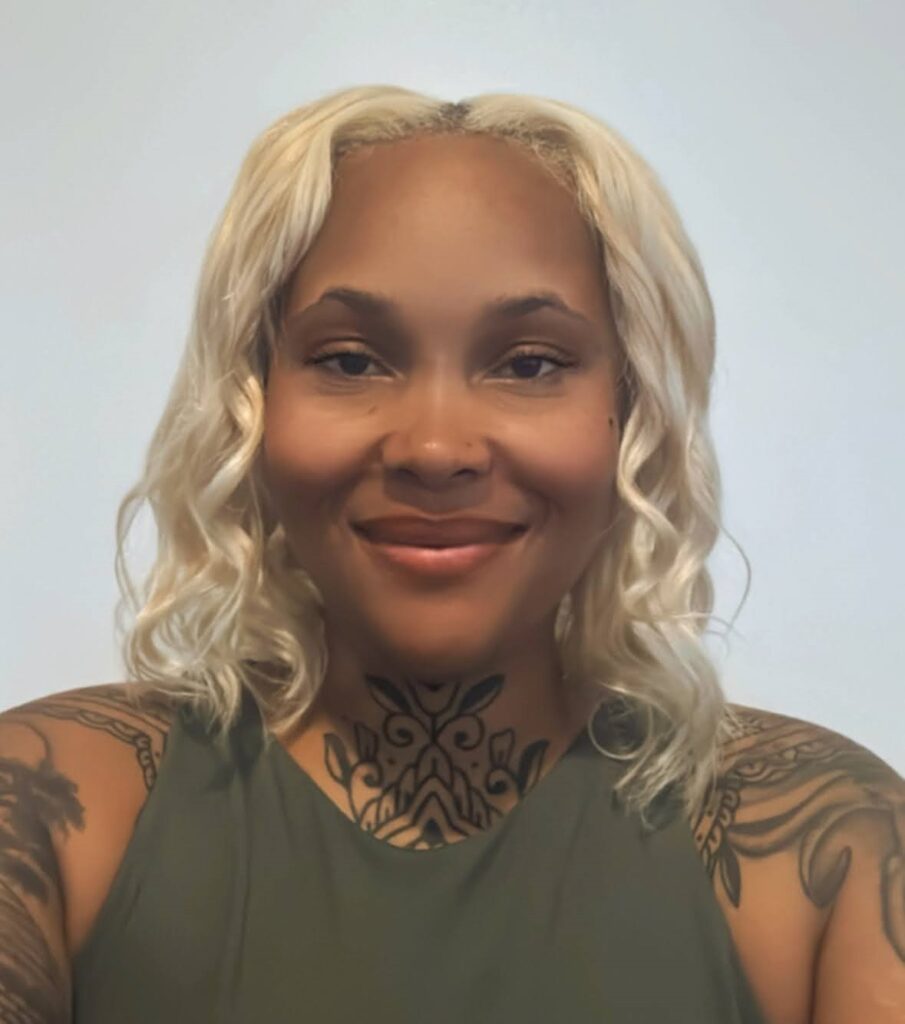
What a timely and very necessary culmination of work about the state of anthropology’s funding practices in the United States! This report puts, in the most transparent terms, the ways in which Black and Indigenous anthropologists are systematically excluded from legitimacy in a violent system that seems bent on reproducing itself. We find ourselves still begging the question “anthropology: for whom and what?” (Remy 1976). This report illustrates that while anthropology is theoretically open to other worldviews, there are real efforts to maintain its colonial and imperialist roots that marginalized scholars are aware of and forced to contend with—exemplified by this Black scholar’s response to a question in the report :“…we’re researchers and scholars. We pick up on patterns very quickly. We can see through the fakery.”
So where does that leave us in the journey of reckoning with anthropology’s inequities? For numerous decades, calls to rethink the nature of anthropology as a discipline have dominated the discourse of “anthropologizing” anthropology, yet they have still largely operated within established boundaries and have not changed the discipline fundamentally. It requires us to unthink the very foundations of what anthropology’s academic disciplinarity establishes and assumes as expertise. Or as Sithole (2016) contends, “Why is it accepted that the discipline is the embodiment of knowledge? Or put another way, why is knowledge thought of within the confines of the discipline?” This critically underscores the fact that knowledge production often caters to the aspirations and necessities of certain individuals and institutions to the exclusion of others. Thinkers like Jacques Derrida, Michel Foucault, and many others, whose critical theories are employed as theoretical instruments to examine the “Other,” attain a canonical status in the discipline. Simultaneously, discourses and narratives originating from global subaltern locations, which represent a form of critical thought outside of the framework of Euro-American modernity, are overlooked and excluded. Even amidst glaring calls for decolonizing practices, if Euro-American dominant discourses are not used as a method of analysis by BIPOC scholars, there is a higher likelihood of being called “unobjective,” especially by larger funding institutions.
Moving forward, we must critically engage with this report as a space to reckon with the confines of the discipline and the very foundations of its epistemological order, which inherently excludes ways of knowing and knowledges that do not fit within its “Worldview.” As many Black and Indigenous scholars pointed out in this report, there are a variety of ways that granting agencies could better support them (e.g., access to example proposals, constructive feedback before and after submitting, reviewer selection practices, grants mindful of teaching heavy or scholars at community colleges) but most imperatively, expanding what is seen as research (Rodriguez 2001; Mavhunga 2017; Watkins 2020). These patterns become particularly evident with the rise of predatory academic capitalism, where education and research are commodified and marketed for profit.
Jenail Marshall is a Doctoral Candidate in Anthropology at Purdue University.
Mavhunga, Clapperton Chakanetsa, ed. 2017. What do science, technology, and innovation mean from Africa? Boston: MIT Press. https://doi.org/10.7551/mitpress/10769.001.0001
Remy, Anselme. 1976. Anthropology: for whom and what? The Black Scholar, 7(7):12-16.
Rodriguez, Cheryl. 2001. A homegirl goes home: Black feminism and the lure of native anthropology. In I. McClaurin (Ed.), Black feminist anthropology: theory, politics, praxis, and poetics. Irma McClaurin, ed. Pp. 233–258. New Brunswick, NJ: Rutgers University Press.
Sithole, Tendayi. 2016. A decolonial critique of multi-inter-transdisciplinary (MIT) methodology. In Decolonizing the university, knowledge systems and disciplines in Africa. Sabelo J. Ndlovu-Gatsheni & Siphamandla Zondi, eds. Pp. 107–130. Durham, NC: Carolina Academic Press.
Watkins, Rachel J. 2020. An alter(ed)native perspective on historical bioarchaeology. Historical Archaeology 54(1):17–33.
Removing Access Barriers: A Reply to Heath-Stout
We read Heath-Stout’s paper with a sense of gratitude for her having taken up this work. We also are grateful to Wenner-Gren for convening the funding agencies in a quest to promote clarity and awareness. Removing access disparities is the work of us all, at all levels, in all places. These research data are a portal through which we can see some of the avenues where investments and enhanced awareness will lead to improvements. Heath-Stout sounds a clarion call to let us know there is much work to be done and allows us to see where we may focus our efforts. The results of the surveys tell us that we need more information from more of us. Thank you, reader, if you filled out the survey.
As authors, we write with the positionality of cisgender hetero women without (in)visible disabilities who work in academia and also serve on the board of a non-profit educational organization, the Institute for Field Research (IFR). The IFR seeks to raise the bar on field learning and research experiences while lowering access barriers. We support fieldwork by giving grants to researchers who share our commitment to transforming individuals and communities through experiential education and field research and who invest in good field- (or lab-) based pedagogy. We aim to redistribute our income as a non-profit and use our close connection to students and practitioners to aid in creating a more equitable and accessible field, all the while realizing it is not nearly enough.
Organizations at all levels, including those not typically considered funding agencies—such as departments and other intramural sources–are potential agents of change. We too can take a look at our internal data and adopt a reflective, reflexive stance toward our processes of allocating funding. Given the demographics of those in senior positions and the processes of giving out departmental funds (varies widely, may be based on formal or informal applications, may also be relational [is your advisor the chair?]), this is an area where reflection will yield change. The federal agencies that were not able to contribute their data publicly likewise should engage in this work.
Of particular concern to us in a field-based practice, as archaeologists and other field workers, is Heath-Stout’s data about disability. The respondents indicate that approximately 1 in 4 respondents (24.78%) identify as having a disability (see Table 1.14). This is higher than the estimate of the World Health Organization, which estimates that 16% of the world’s population, or 1 in 6 of us, have a significant disability (see World Health Organization 2023). Also, 1 in 5 of us have a mental health condition (see Centers for Disease Control and Protection 2023. Future research might help us by adding additional data specificity, that is, through a call to seek more detail about the self-identification of disability. The much higher rate (24.78% compared to 5-6%) likely speaks to a conflation of categories of different abilities and of protected disability categories, e.g., both physical and mental aspects are being lumped together. The intersectionality impacts of this deserve to be teased out in a future survey design. The relatively high rate of participation of those with a self-declared disability may be a bright spot in terms of access and a reflection of success by funders in attracting people who identify in this way. There are differences in funding success between those identifying with a disability and those not, such that certain funders may have cause for deep reflection while a few others (e.g., the American Philosophical Society, the Explorers Club, and the Leakey Foundation, to name three) are notable in giving at a rate beyond mere representation. A particularly significant arena of even greater disparity is present in hiring practices in academia. This becomes visible on Table 2.09, which shows that the career gauntlet selects out a high percentage of those with disabilities after the granting of the Ph.D. Tenured/tenure track faculty disability levels are lower than those of all other categories. A closer look at this would be instructive. Is an ableist academy reproducing itself or are disabilities hidden? Heath-Stout’s work prompts many and interesting avenues for future exploration.
Lynn Dodd is Professor of the Practice of Religion and Spatial Science at the University of Southern California, and Willeke Wendrich, is Professor of Archaeology and Digital Humanities, University of California, Los Angeles.
Centers for Disease Control and Protection. 2023. About Mental Health. https://www.cdc.gov/mentalhealth/learn/index.htm#print
World Health Organization. 2023. World health statistics 2023: monitoring health for the SDGs, sustainable development goals. https://www.who.int/news-room/fact-sheets/detail/disability-and-health#:~:text=An%20estimated%201.3%20billion%20people,earlier%20than%20those%20without%20disabilities.
The Leakey Foundation and Research Equity
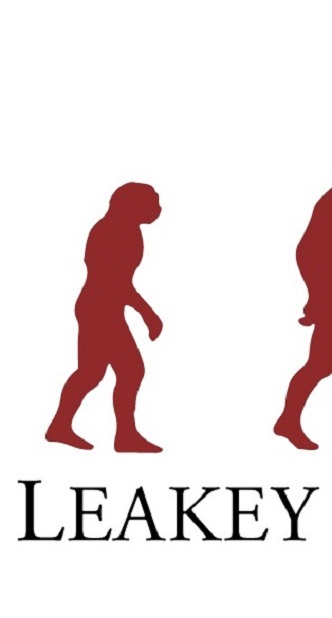
The Leakey Foundation is committed to creating a diverse, equitable, and inclusive group of scholars who study human origins. We welcome Dr. Laura Heath-Stout’s report on the demographics of anthropology research grant applicants and the factors that influence applicants’ decisions to apply for funding. Additionally, we appreciate the suggestions for ways funding agencies can take action to improve diversity and equity in our field. We pledge to review these carefully and implement them as needed in our ongoing efforts to make human origins research careers accessible to all.
We acknowledge that research in the areas for which we provide funding is not conducted by a diverse group of researchers. The Leakey Foundation has created innovative funding programs to address this issue. For 45 years, the Baldwin Fellowship program has supported graduate students who are citizens of countries where there are limited opportunities for advanced training and education in fields of research related to human origins. Since 2019, the Francis H. Brown African Scholarship has provided financial assistance to East African researchers and students pursuing research in earth sciences and botany related to human origins. Our newest program, the Joan Cogswell Donner Field School Scholarship, provides field school funding for students who are from countries with limited resources to support training in fieldwork related to human origins research. By supporting these students and placing special emphasis on funding graduate students, postdoctoral researchers, and pre-tenure faculty members, we hope to foster a community of scientists who reflect the demographics of society at large.
H. Gregory is Program Officer at the Leakey Foundation.
